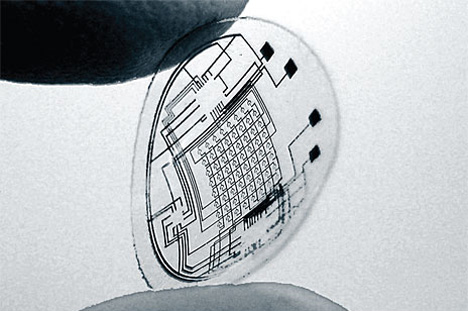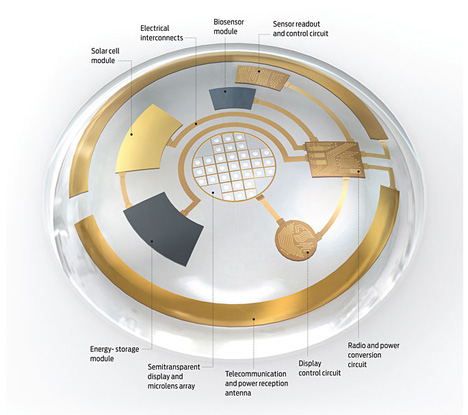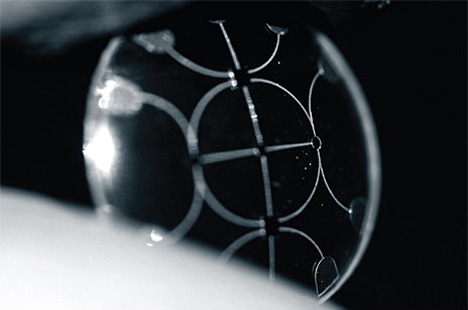
Imagine how much easier your day would be if a heads-up display gave you directions to your dry cleaner, displayed today’s weather forecast, or let you check your email without the need for a computer or hand-held gadget. Sounds like the future, right? It’s closer than you might think. Babak A. Parviz, a bionanotechnology expert at the University of Washington in Seattle, has released a report detailing just where the bionic eye (or at least the augmented vision contact lens) technology is at right now, and it’s pretty amazing. Not only is augmented vision possible – prototypes are being tested right now.

The contact lenses that millions of people wear currently to correct their vision are nothing more than curved polymers. To integrate a heads-up display into this type of lens, tiny specialty components would need to be embedded in the polymer. LEDs, tiny antennae, and special circuits would work together to display information in front of the wearer’s eye. A small portable device will likely be required to accompany the lenses in order to process the information.

The report points out that the lenses wouldn’t need to be overly complicated. But with a few years of development, they could translate or caption speech in real time, augment video game playing, and let users view graphics without a physical display device. But even cooler than the vision enhancement possibilities is the fact that these cybernetic contact lenses can even measure essential biological information from the wearer. The lenses are in constant contact with the body, so they could be used to measure glucose, potassium, cholesterol and sodium levels, among other things. A transmitter could then relay the needed information to the wearer’s health care providers wirelessly, keeping them involved and informed while reducing the possibility of mix-ups.

There are still some obstacles to overcome before the lenses will be put to use. Most notably, the components will need to be made extremely small, and transparent so that users can still actually see their surroundings while wearing the lenses. There’s also the problem of making all of the components safe for long-term usage in the eye. Mr. Parviz seems confident that the challenges can be overcome, though, and that the augmented vision displays will one day be as ubiquitous as iPhones.

